These days, our homes have to do it all. You might need to work, relax, and play—sometimes all in the same room. It’s a challenge, for sure, especially as our homes keep taking on more roles in our daily routines.
Remember to repin your favorite images!
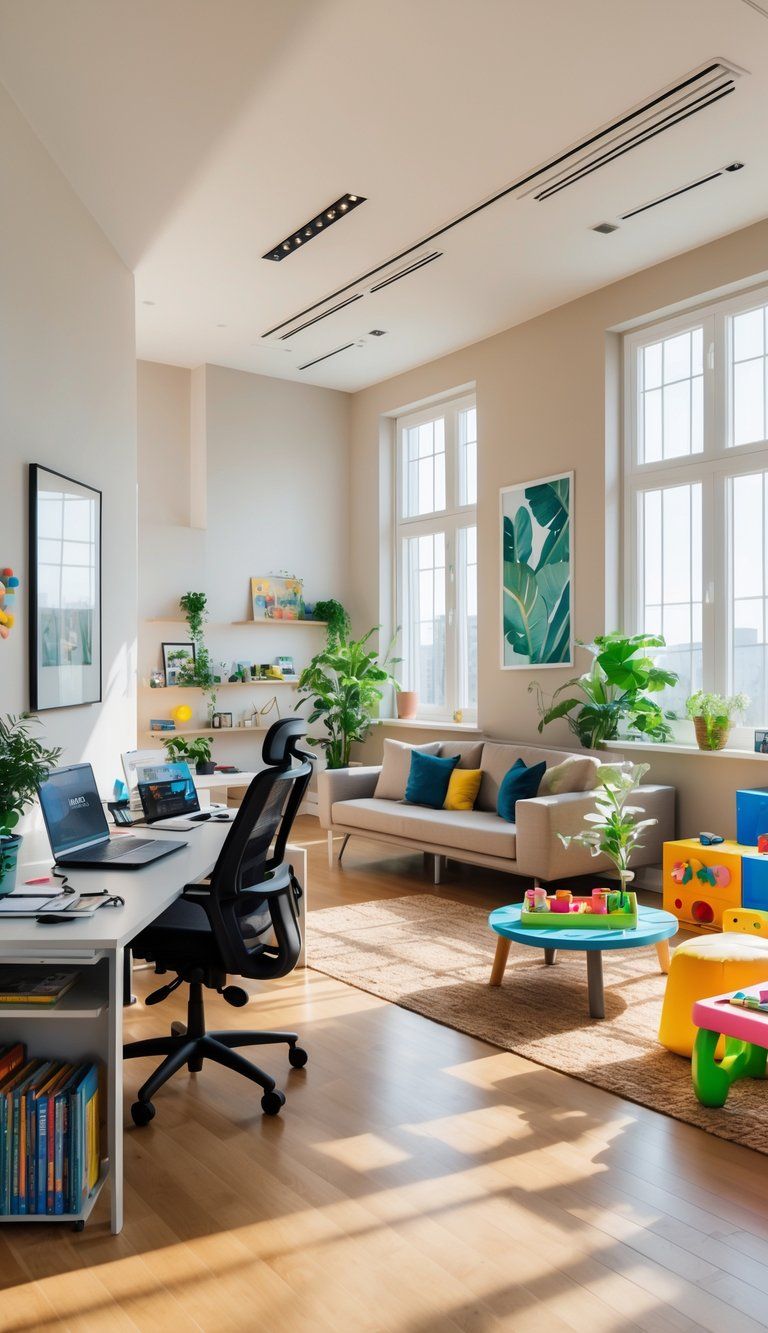
You’ll get the most out of your space by creating distinct zones. Try using furniture arrangement, area rugs, or even a simple room divider to split up your workspace from your chill-out corner.
A bookshelf or a decorative screen does the trick as a divider, but you won’t make the space feel boxed in.
If you put in a bit of thoughtful planning, your living space can shift between activities pretty seamlessly. The right furniture and layout choices help you juggle work and downtime, even if you’re working with a small space.
Understanding the Concept of Multi-Functional Spaces
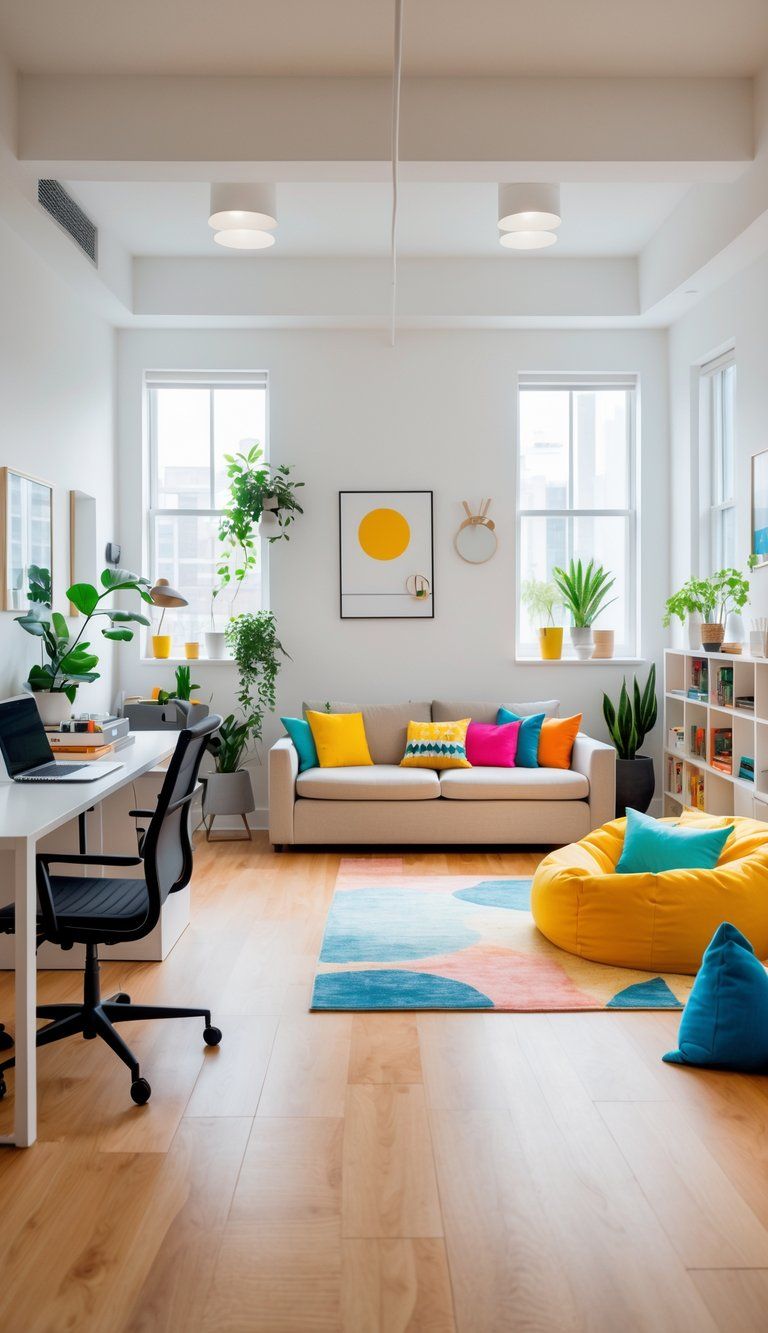
Multi-functional spaces let you do different things in the same area, so you don’t need a separate room for every activity. This kind of flexible setup feels almost essential now, especially as city homes keep shrinking.
Benefits of Multi-Functional Living
You can squeeze the most out of every square foot with a multi-functional setup. Even a small home starts to feel bigger and more usable.
One minute you’re working, the next you’re exercising, or maybe you’re hosting friends. It all happens in the same space.
These dynamic spaces adapt as your day changes. Your dining table might double as a desk during the day, then transform back for dinner at night.
It’s a money-saver too. Instead of buying a bigger place, you can invest in versatile furniture that pulls double duty. That’s a big deal, especially where real estate costs keep climbing.
Multi-functional living also brings people together. Even if everyone’s doing their own thing, you still share the same space.
Key Elements of Successful Spaces
Versatile furniture is where it all starts. Look for pieces that earn their keep, like:
- Sofa beds for guests
- Storage ottomans that hide stuff and give you a seat
- Nesting tables you can pull out when needed
- Murphy beds that tuck away
Zoning gives each activity its own spot without building walls. Try area rugs, different lighting, or clever furniture placement to mark out your work, relaxation, and entertainment areas.
Integrated storage keeps clutter from taking over. Built-ins and furniture with hidden compartments help you stash things for different activities but keep them handy.
Lighting design can totally change the vibe. Use adjustable fixtures or dimmers to switch a room from bright and focused to cozy and laid-back.
Planning for a Versatile Environment
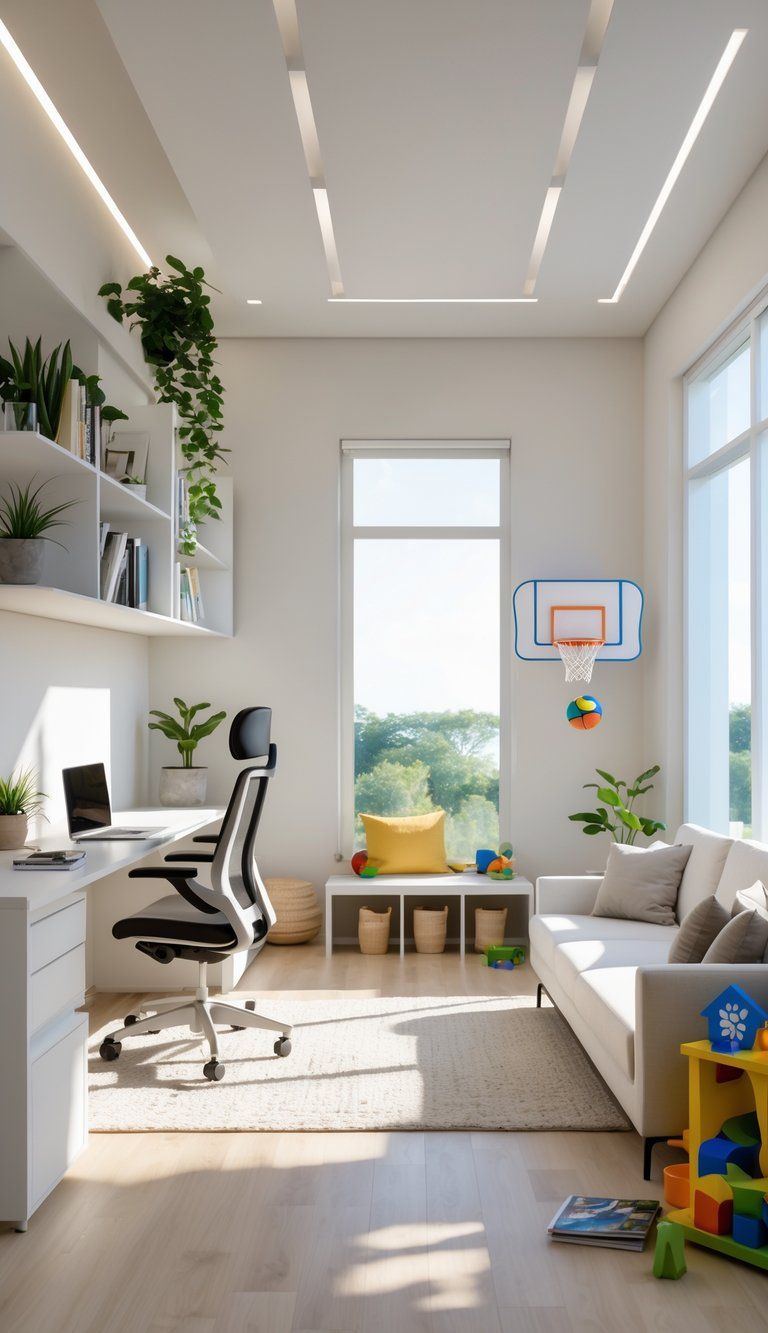
If you want your space to work for everything, you have to plan. It’s about balancing what you want with what actually fits in your home.
Identifying Needs and Priorities
Start by jotting down every activity you want to fit in. Need a home office? A workout spot? A place to relax or entertain? Rank them by how often you use them and how important they are.
Think through your daily routine. Which things happen at the same time? Which need their own space? Maybe you work while someone else watches TV, or you like to exercise before everyone wakes up.
Look ahead too. A flexible space should be able to change as your needs do. If you host guests now and then, figure out how your space could work for that.
Priority checklist:
- Daily must-haves
- Weekly regulars
- Occasional stuff (guests, projects)
- Noise and privacy needs
Assessing Available Space and Layout
Grab a tape measure and see what you’re working with. Sketch out a quick floor plan—mark windows, doors, outlets, and anything you can’t move.
Watch how people move through the room. You don’t want to block the main walkways. Open-concept rooms work best with zoning from furniture, not walls.
Lighting matters for each activity. Work spots need task lighting; relaxation zones need softer, adjustable lights. Let in as much natural light as you can and set up your main activities near it.
Don’t forget the walls. Wall-mounted shelves, fold-down desks, and ceiling hooks free up floor space. Go for multi-purpose furniture like storage ottomans or convertible sofas—they keep things flexible without crowding the room.
Designing Work Zones in Your Space
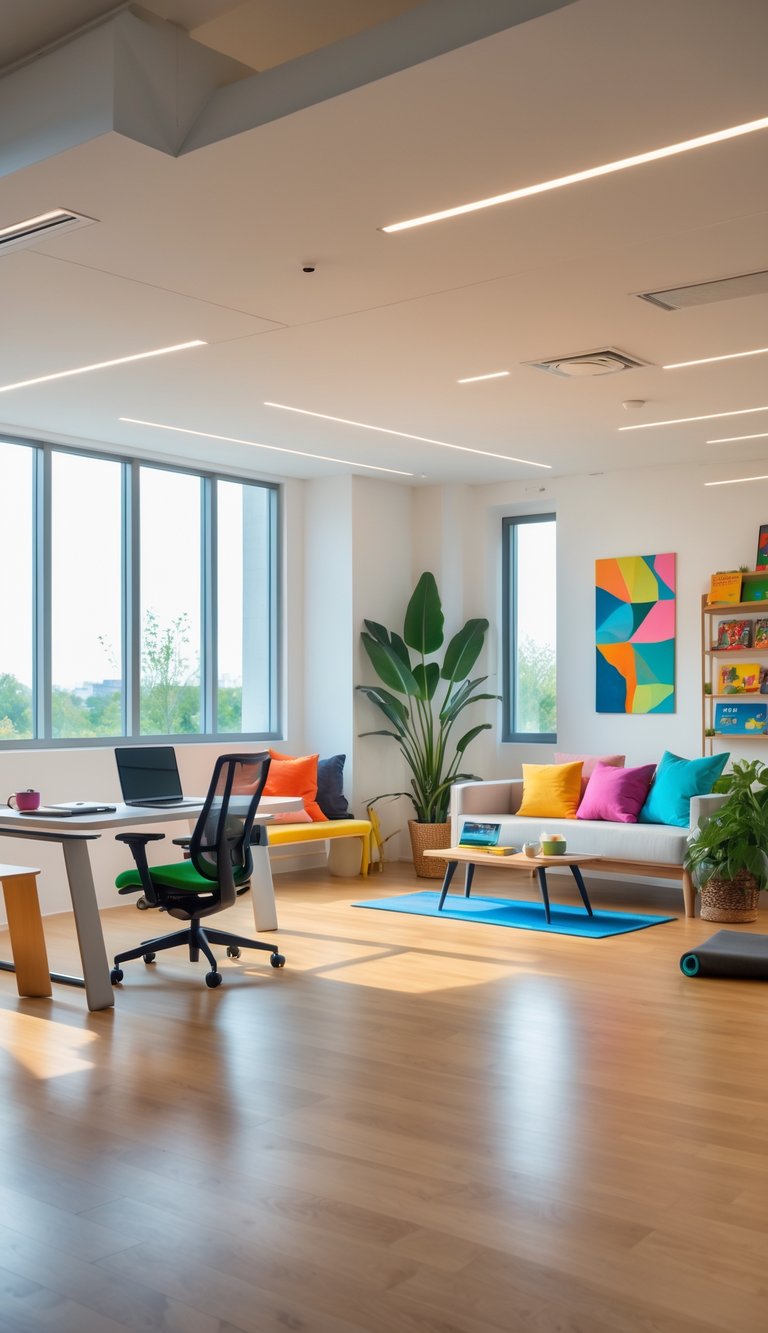
If you want to get work done at home, you’ll need to carve out a space that actually helps you focus. A good layout and the right tools make all the difference.
Creating a Home Office Area
Pick a quiet corner with some natural light for your home office. Make sure there’s space for your desk and chair—your back will thank you.
Wall-mounted desks are awesome space-savers. Fold them up when you’re done, and the room opens back up. Floating shelves above the desk hold your supplies without eating into floor space.
Use room dividers or bookcases to give your work zone a clear boundary. You’ll find it easier to mentally switch between work and downtime.
Don’t skimp on task lighting. A decent desk lamp cuts down on eye strain and keeps you focused. Adjustable lamps are best—you can point the light exactly where you need it.
Remote Work Setup Tips
Your tech setup really affects how well you work. Set your desk near an outlet, and use cable organizers to keep cords out of the way.
Must-haves:
- Fast, reliable internet
- Ergonomic mouse and keyboard
- Monitor at eye level
- Headphones for calls
Ergonomics matter more than you’d think. Pick a chair that supports your back, and a desk at the right height for your arms. If you’re sitting for hours, maybe try a standing desk converter.
Add a few things that make you happy—a plant, a pinboard, or some art. Keep what you use most within reach, but don’t let clutter pile up. A tidy workspace really helps.
Stash your work supplies in style. Use decorative boxes, drawer organizers, or a small filing system that matches your decor. Storage solutions keep things out of sight, but still close by.
Integrating Play and Entertainment Areas
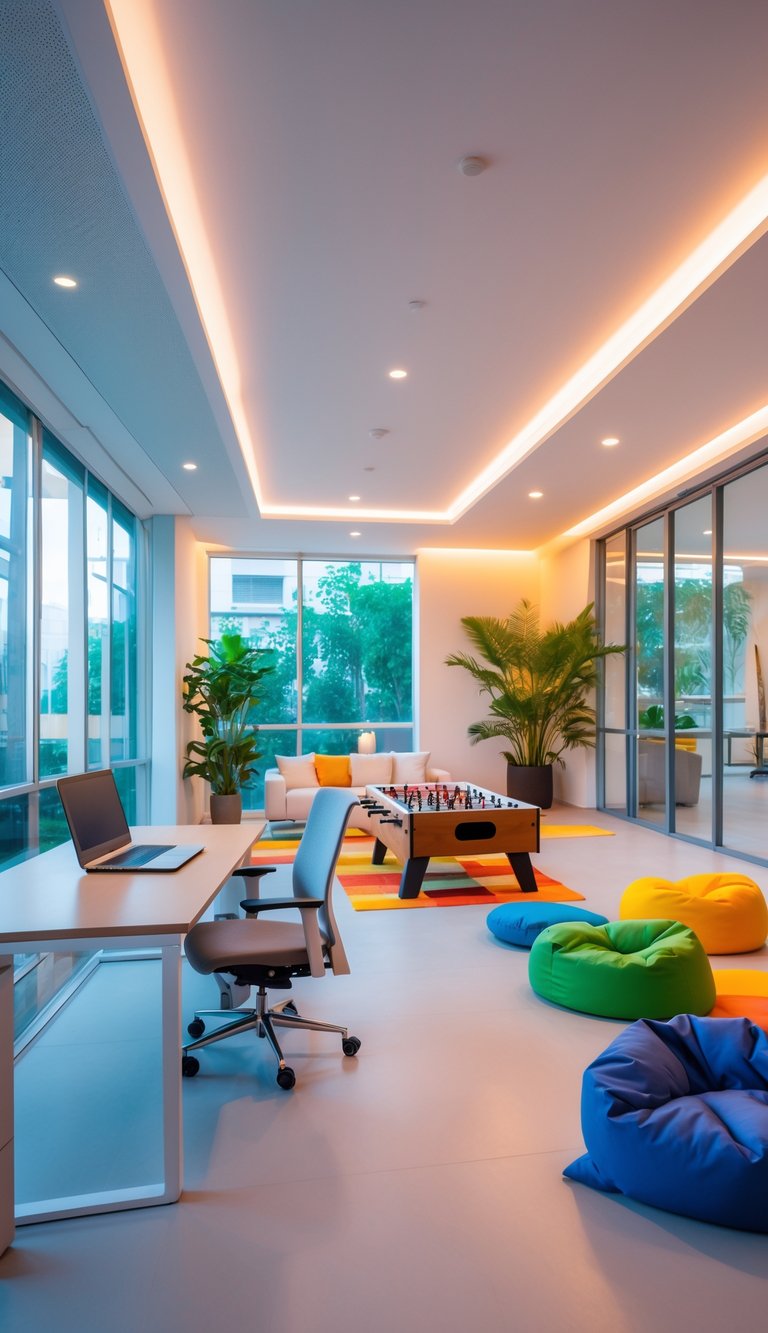
Don’t forget to make room for fun. Balancing work with play and entertainment is what makes a space feel truly livable.
Entertainment Area Essentials
Start with furniture that does double-duty. A modular sofa with movable pieces can work for movie nights or split up for parties. Ottomans with storage give you a spot to stash remotes or magazines.
Mount your TV on the wall to save space and keep things looking neat. If you can, use an adjustable mount so you can watch from anywhere.
Hide your electronics when you’re not using them. Entertainment centers with closed cabinets work well, and floating shelves above the TV can hold your favorite decor or extra gear.
Game and Play Corners
You don’t need a ton of space for a game area. A small table with fold-down sides can double as a work surface or a spot for board games. When you’re done, just tuck it away.
Try these space-saving ideas:
- Wall-mounted board game racks that look like art
- Coffee tables with storage for cards and games
- Nesting tables for extra surfaces on game nights
If you’ve got kids, flexible furniture like floor cushions or poufs is a lifesaver. Use baskets or bins to keep toys tidy but easy to grab.
Built-in cabinets with adjustable shelves work for games of all sizes. Label the drawers so it’s easy to find what you want and put things away after.
Designing a Relaxation Zone

Everyone needs a spot to unwind. Your relaxation zone should feel totally separate from your work area, even if they’re technically in the same room.
Creating an Inviting Atmosphere
Start with comfy seating that makes you want to kick back. Modular sofas are great because you can move them around as needed. Sofa beds and storage ottomans are handy for guests and keeping things tidy.
Lighting sets the mood. Go for dimmable lamps or bulbs with a warm glow (2700-3000K) to make it cozy. Skip the bright overhead lights in this zone.
Layer in soft textures with pillows, throws, and rugs. Pick fabrics that feel good—cotton, wool, velvet, or whatever you love.
Bring in some plants for a fresh vibe and better air. If you’re not much of a plant person, try something easy like a snake plant or pothos.
Establishing a Reading Nook
Every relaxation zone needs a reading nook. Find a cozy chair with good back support, or maybe a small loveseat to curl up on.
Good lighting is a must here. An arched floor lamp or a small table lamp works well, depending on your space.
Reading nook basics:
- A comfy chair or seat
- Adjustable lighting
- Small side table for drinks
- A spot for books and magazines
Add a bookshelf or some floating shelves close by so your favorite reads are always at hand. It’s practical and adds a personal touch.
Use a divider, a bookcase, or even a big plant to separate your nook from busier parts of the room. That little boundary can help your brain shift into relaxation mode.
Effective Space Zoning Techniques
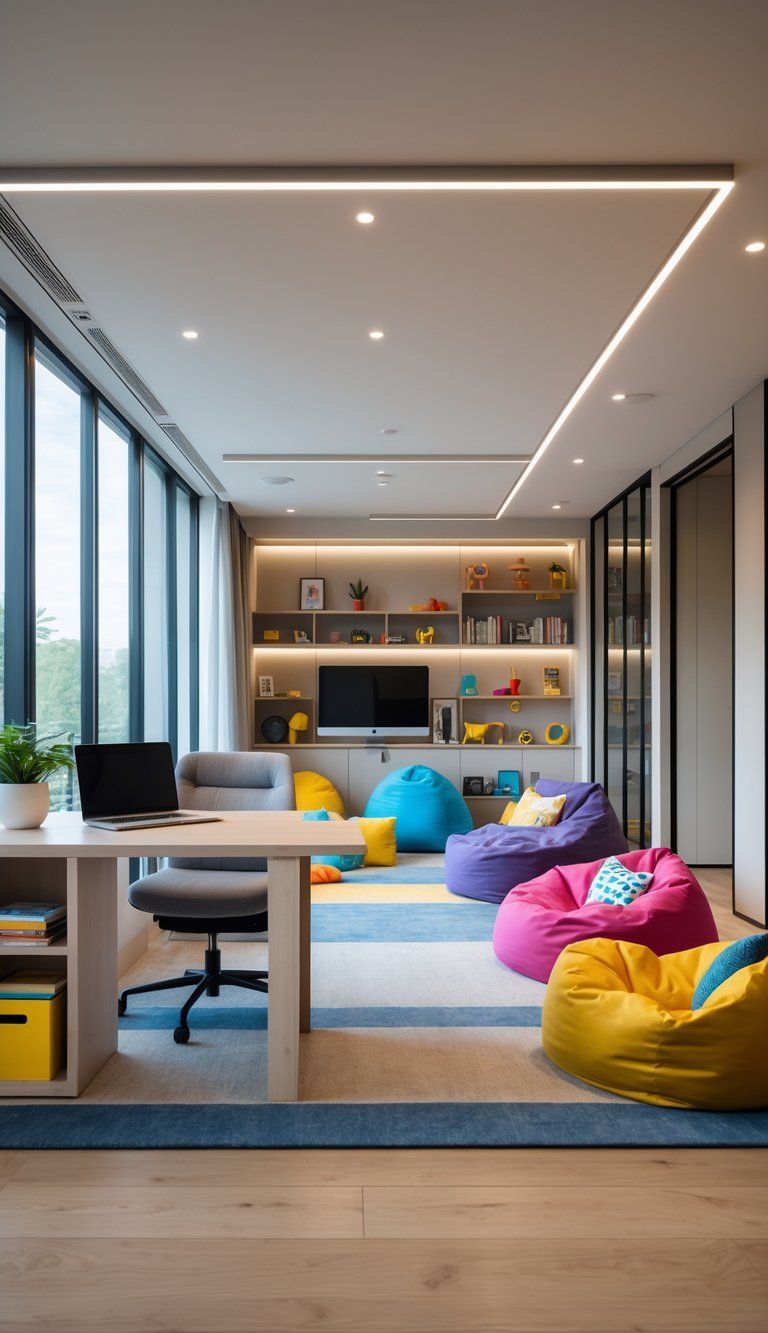
When you break up your space into zones, every area gets a job—no walls required. A bit of strategic zoning can turn an open room into a place that does everything you need, but still feels open and welcoming.
Using Room Dividers and Area Rugs
Room dividers give you a flexible way to split up a space—no construction required. Bookshelf dividers do double duty, separating areas and storing your stuff, so they’re great for squeezing a home office into a living room.
Folding screens offer quick privacy when you need it, and you can just fold them away when friends come over. These portable options let you change things up whenever you like.
Area rugs work wonders to define different zones visually. Try putting a unique rug under your dining table to set it apart from the living area.
Let the rug stretch about 24 inches past the table edges to really carve out that dining spot.
For living rooms, pick rugs big enough so all the furniture legs fit on top. This trick instantly shows guests where the living zone starts and stops.
Color Schemes for Distinct Zones
Color choices set up psychological boundaries between different areas. If you use complementary color palettes instead of harsh contrasts, you keep things harmonious while still marking out each space.
Try these color zoning ideas:
- Accent walls: Paint just one wall in your home office a focused blue or green.
- Color families: Stick with shades from the same family—maybe lighter blue for work, deeper blue for relaxing.
- Coordinated furnishings: Throw pillows and little accessories can reinforce each zone’s vibe.
Lighting makes a big difference too. Task lighting in work areas and softer ambient lamps in chill-out spaces really help separate things. Pendant lights above the dining table both light the area and create a visual boundary.
Let your color transitions flow naturally. That way, your eyes move smoothly from one zone to another.
Maximizing Storage in Multi-Functional Spaces
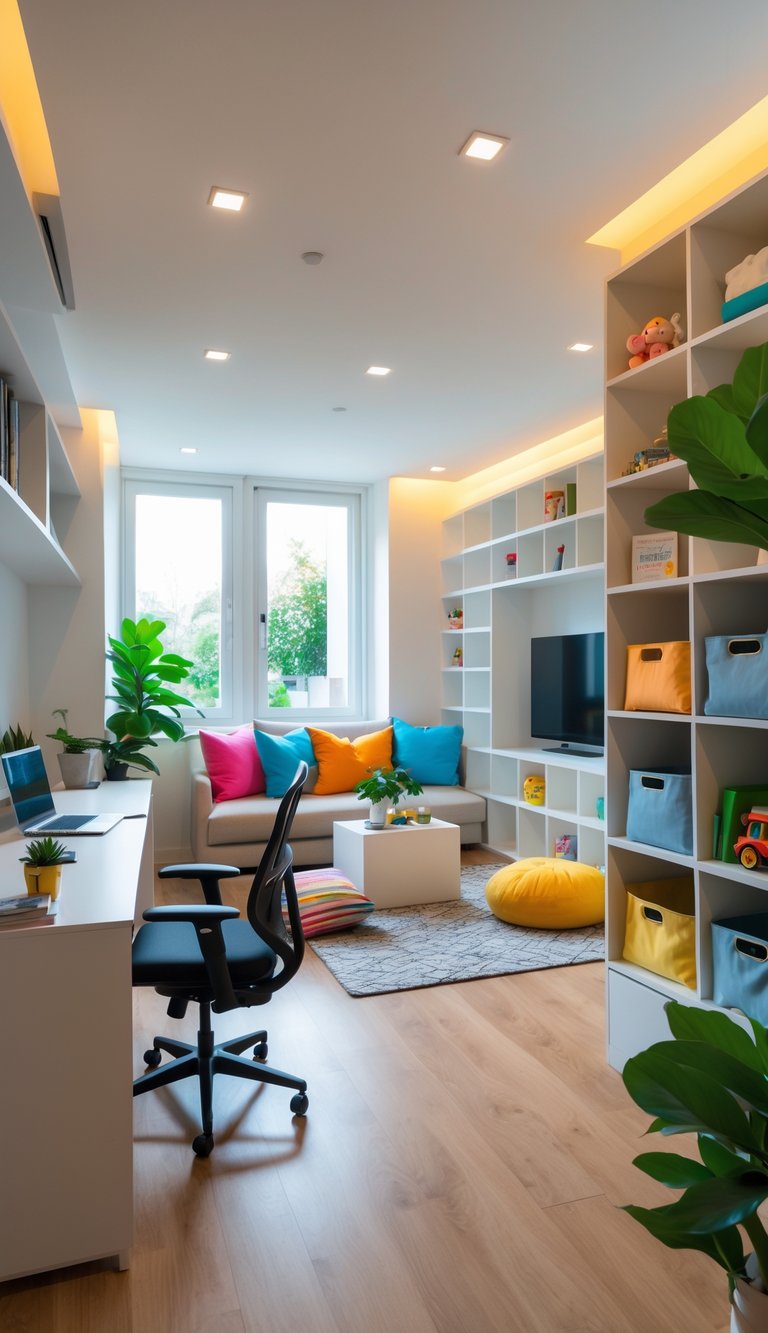
You really need smart storage in multi-purpose rooms, especially when space is tight. Clever organization keeps clutter at bay and makes every activity easier.
Smart Storage Solutions
Furniture with built-in storage lets you squeeze the most out of your space. Check out coffee tables with drawers or lift-tops—stash remotes, magazines, or games, and still have a work surface when you need it.
Storage ottomans are a lifesaver. They’re seats, footrests, and hidden storage all in one. Tuck them in corners or under windows to use up awkward spaces.
Go for furniture that multitasks. Daybeds with drawers underneath handle both seating and sleeping, plus you get storage for linens. Nesting tables spread out for guests and stack away when you’re done.
Dividers with shelving can split up your space and give you more places to put things. They define different zones without closing off the room.
Vertical Storage and Floating Shelves
When you’re short on floor space, look up! Vertical storage makes use of your walls. Tall bookcases or cabinets that reach the ceiling give you tons of storage without eating up precious floor area.
Floating shelves feel lighter than big bookcases and still hold books, plants, or whatever you want to display. Try putting them above desks, couches, or in those weird, unused corners.
Wall-mounted desks and fold-down tables are ideal for tight spaces. Pull them out when you need them, and fold them away to keep the floor open.
Don’t overlook behind-the-door storage. Over-the-door organizers and hooks can hold office supplies, gym gear, or accessories—stuff that otherwise ends up in a pile.
Choosing and Arranging Multi-Functional Furniture
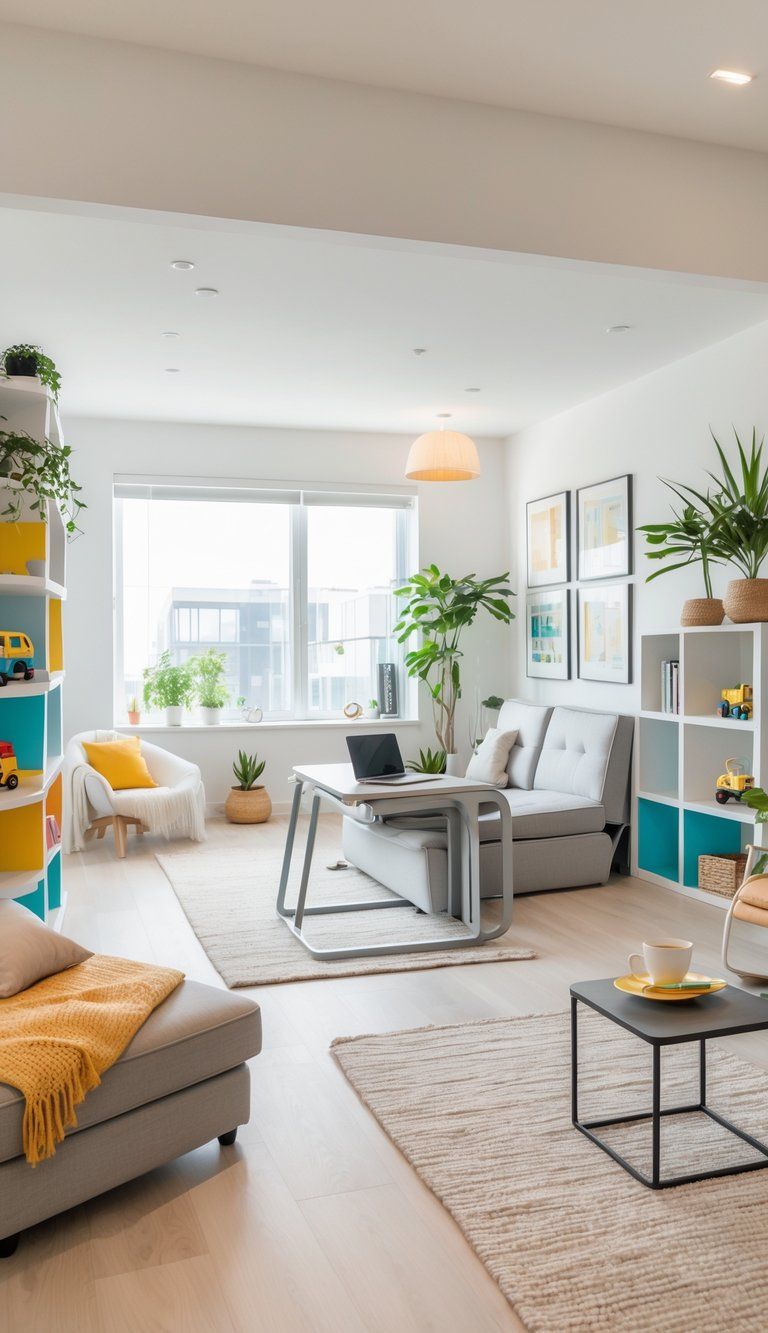
The furniture you pick really changes how your space works for you. Versatile pieces that serve more than one purpose help you get the most out of any room.
Selecting Modular and Extendable Pieces
Modular furniture is a game changer for flexibility. Rearrange, separate, or combine these pieces however you want. A modular sofa, for example, can turn into an L-shape for movie night or break up into smaller seats for a gathering.
Extendable dining tables are perfect if you want to save space. Use the table small for everyday meals, then extend it when company shows up.
Stick with clean lines and neutral colors so your furniture fits in lots of settings. Many modular pieces now have built-in storage or tech features like USB ports.
Don’t forget to measure your space before you buy. Think about how people will move around and how the furniture will work in different setups.
Incorporating Sofa Beds and Storage Ottomans
Sofa beds are a must if you don’t have a guest room. Modern versions are so much more comfortable and easier to use than the old ones. Look for a sofa bed that opens smoothly and has a good mattress.
If you’ll use it every day, make sure the frame is sturdy and the upholstery holds up. A memory foam topper can make it even comfier for guests.
Storage ottomans do triple duty: extra seating, a table, and a place to hide blankets or games. Put a tray on top and you’ve got an instant coffee table.
Place sofa beds near outlets for charging devices, and set ottomans where they can be footrests or extra seats for gatherings.
Optimizing Lighting for Every Zone
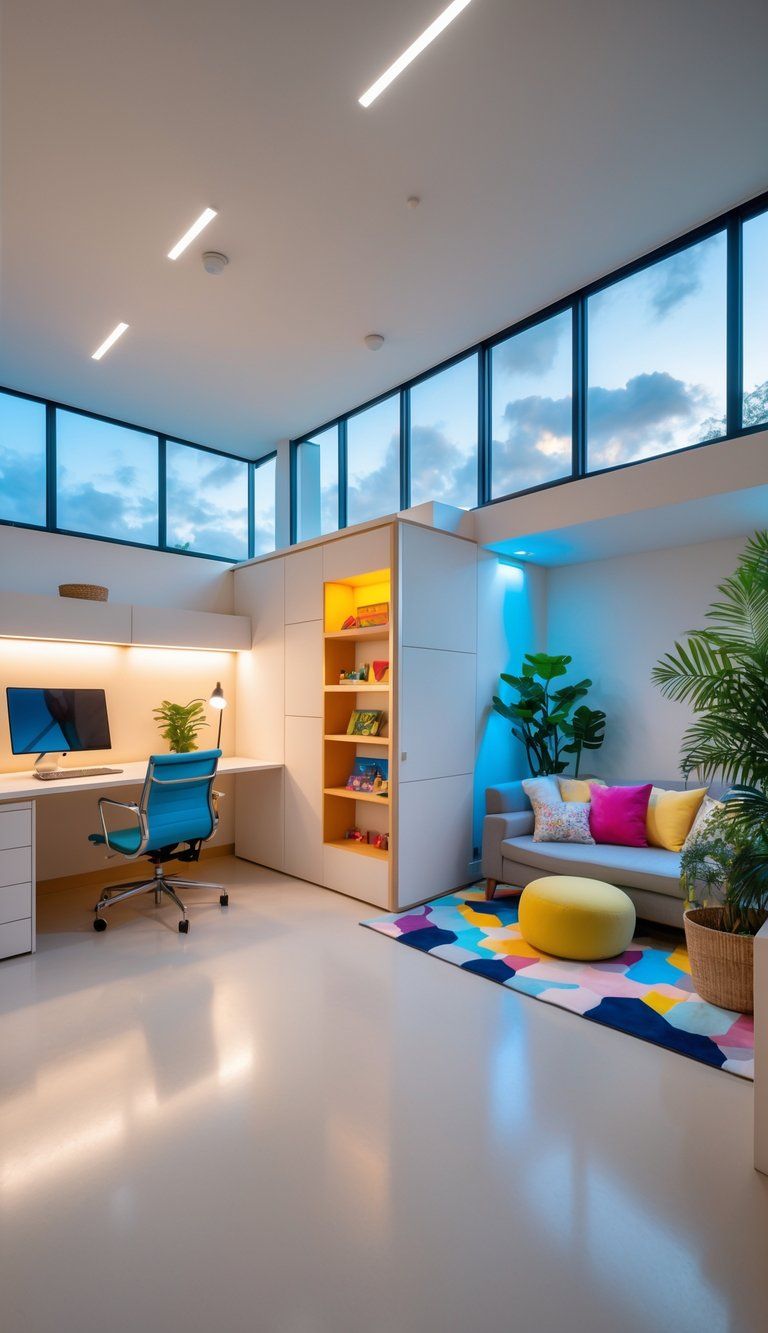
Good lighting totally changes how you use your multi-functional space. The right lighting setup lets you switch from work to play to relaxation without having to rearrange everything.
Layered Lighting for Various Activities
Layered lighting means using different types of lights together for the perfect mood. Start with ambient lighting to illuminate the whole space—recessed lights or tall floor lamps work well for this.
Add task lighting where you need to focus. A desk lamp with an adjustable arm is great for your work zone. Reading lamps beside chairs help you unwind.
Accent lighting can highlight art or cool features in your entertainment area. Wall sconces or track lights draw attention without being overpowering.
Give each zone its own lighting controls. That way, you can keep your work area bright and the rest of the room cozy.
Dimmable and Adjustable Lighting Options
Dimmable lights are honestly a must for flexible spaces. Control the brightness for whatever you’re doing, whether it’s working or winding down. Install dimmer switches for overhead lights so you can go from bright to soft in seconds.
Smart lighting systems are even better. Set up preset “scenes” for work, relaxation, or anything else—bright and cool for focus, warm and dim for downtime.
Try fixtures like swing-arm wall lamps or track lighting that you can move around as needed. These give you options without making permanent changes.
Color temperature matters more than you might think. Cooler lights (4000K-5000K) help you stay alert in work zones, while warmer bulbs (2700K-3000K) make relaxation areas feel inviting. Some smart bulbs even let you change the color with your phone.
Personalization and Final Touches
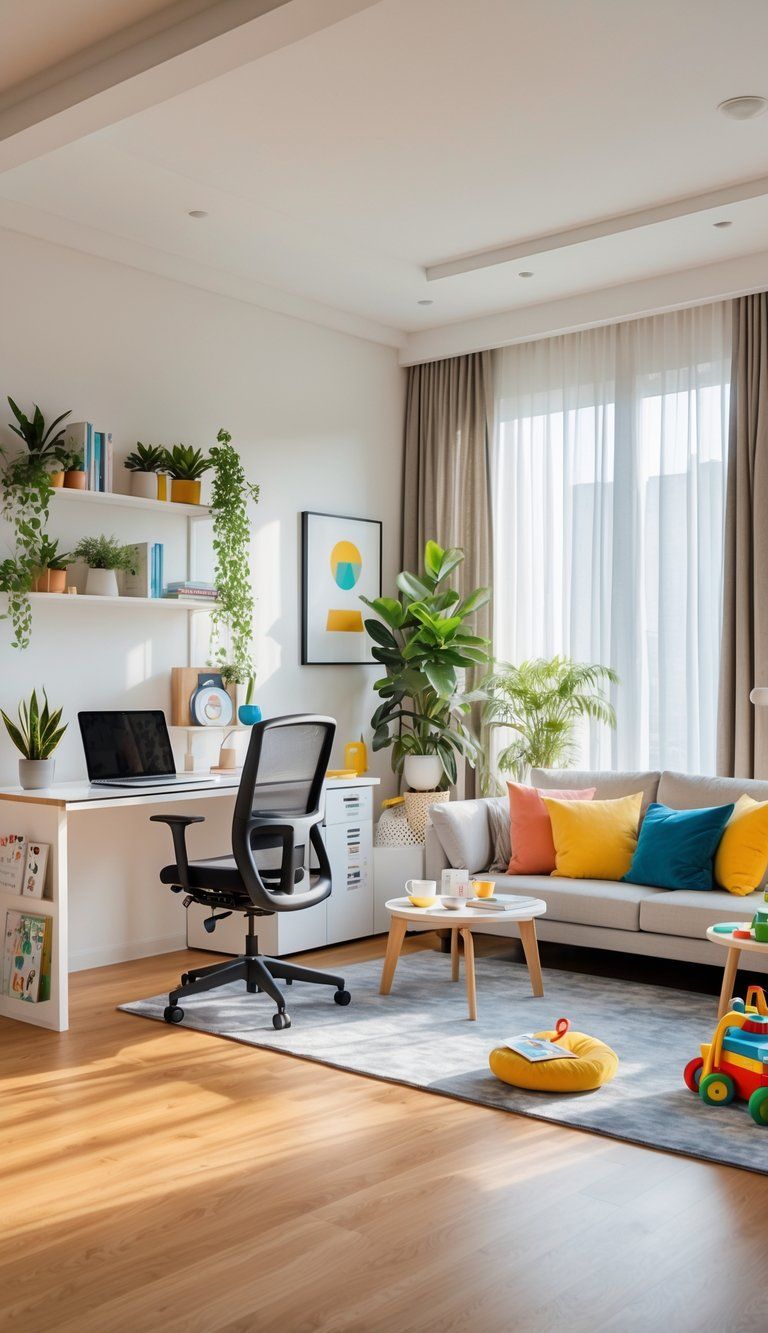
A space only truly works for you when it feels like yours. The little details you add will turn your multi-functional room from basic to personally meaningful.
Expressing Your Personality
Your workspace should feel like it belongs to you, not just anyone. Pick a color scheme that either energizes or calms you—whatever fits your mood best. Bold shades like deep blue or yellow can boost creativity, while neutrals keep things peaceful.
Put up artwork that actually inspires you. Whether it’s family photos, prints, or your own creations, choose pieces that make you smile.
Furniture style matters too. Maybe you love sleek modern pieces, or maybe traditional comfort is more your thing. Pick what feels right, but make sure it still helps you get work done.
Little things like wall decals, quirky bookends, or a fun desk lamp add personality without crowding your space.
Adding Personal Touches for Comfort
Comfort items make long workdays easier and help you shift from work to relaxation. Layer in soft textures—pillows, throws, or a cozy rug can warm up your workspace.
Plants breathe life into any room and improve air quality. If you’re not a plant expert, go for easy options like snake plants or pothos.
Scents can change your mood in seconds. Try a small diffuser with lavender for calm, or citrus for a little energy boost.
Organize with decorative boxes or baskets that match your style. They keep clutter away and add a pop of interest.
Don’t forget the simple comforts—a favorite mug for your coffee, or a special pen holder. These small touches make your space welcoming and truly yours.
Maintaining Flexibility for Changing Needs
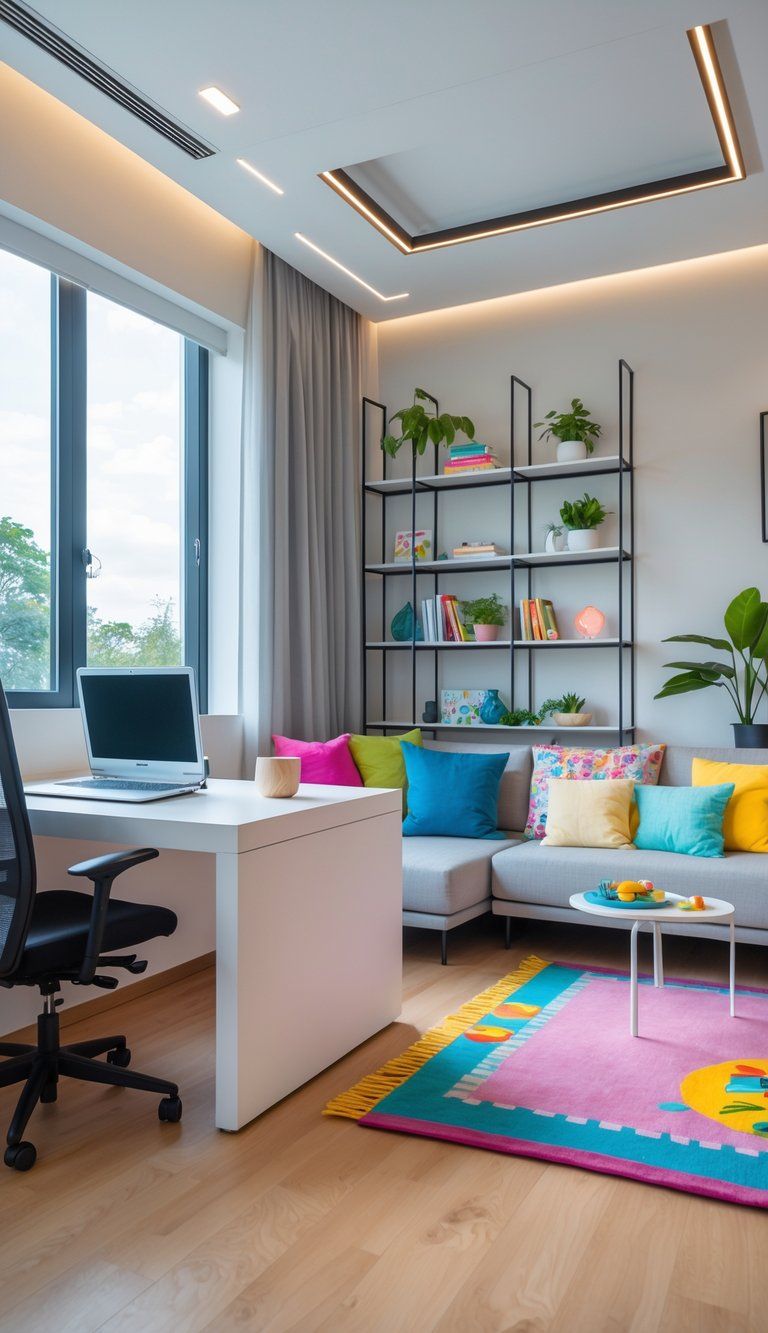
Spaces that can change with your life just make sense. If you plan thoughtfully now, you’ll save yourself headaches and money down the road.
Adapting Layouts for Future Uses
Start with a flexible mindset. Movable partition walls can quickly divide or open up areas as needed. You can turn a big living room into separate work and relaxation spots in minutes.
Invest in adaptable furniture—expandable tables, murphy beds, or modular seating you can rearrange. A dining table with fold-down leaves is perfect for solo meals or big gatherings.
Built-in pieces that do more than one thing are gold. A window seat with storage underneath gives you a place to sit and a spot to stash seasonal stuff.
Quick flexibility tips:
- Use area rugs to mark zones instead of permanent flooring
- Install track lighting you can move as the room’s purpose changes
- Pick furniture on wheels so you can rearrange things easily
Incorporating Workout Spaces
Your home gym doesn’t have to take over an entire room to work well. Sometimes, you just need to spot a corner or a hallway that can fit your gear when you’re using it and then sort of disappear when you’re done.
I love wall-mounted options because they actually save a ton of floor space. You could try a fold-down workout bench or just stash resistance bands in a nice-looking basket when you’re finished.
Multi-functional workout solutions:
- A yoga mat that rolls up and tucks away in a container you actually like
- Adjustable dumbbells so you’re not tripping over a dozen weights
- Ottoman storage for hiding those random fitness accessories
Tech helps a lot, too. If you clear a bit of wall space, you can project workout videos instead of mounting a TV you probably don’t want in your exercise spot anyway.
Don’t forget about lighting and fresh air—those can make or break your workout space. Throw in some dimmers so you can tweak the brightness depending on what you’re doing.

